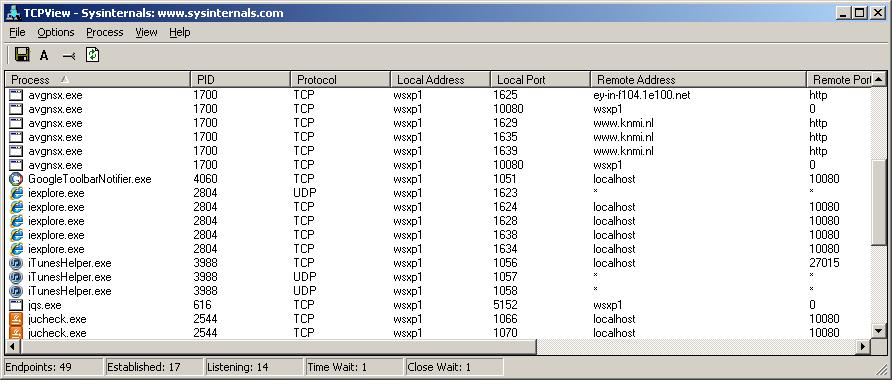

Endpoints that change state from one update to the next are highlighted in yellow those that are deleted are shown in red, and new endpoints are shown in green. By default, TCPView updates every second, but we can use the Options|Refresh Rate menu item to change the rate. On Windows XP systems, TCPView shows the name of the process that owns each endpoint. We can use a toolbar button or menu item to toggle the display of resolved names. When we start TCPView it will enumerate all active TCP and UDP endpoints, resolving all IP addresses to their domain name versions. We can use TCPView on Windows 95 if we get the Windows 95 Winsock 2. TCPView works on Windows Server 2008/Vista/NT/2000/XP and Windows 98/Me. Tcpvcon usage is similar to that of the built-in Windows. The TCPView download includes Tcpvcon, a command-line version with the same functionality. In addition, you can end selected processes and close selected connections. TCPView provides a more informative and conveniently presented subset of the Netstat program that ships with Windows. On Windows Server 2008, Vista, NT, 2000 and XP TCPView also reports the name of the process that owns the endpoint. TCPView is a Windows program that will show us detailed listings of all TCP and UDP endpoints on our system, including the local and remote addresses and state of TCP connections. If you think that this tool is suit for you indeed. Here I will show you the detailed introduction of this utility. If you are a network administrator too or have the same requirement as me. I have used a lot of TCP tool but TCPView is the best of all.

As a network administrator I usually need to monitor and track all TCP and UDP endpoints on my system and print a detailed listings of all TCP and UDP connections to analyze later.


 0 kommentar(er)
0 kommentar(er)
